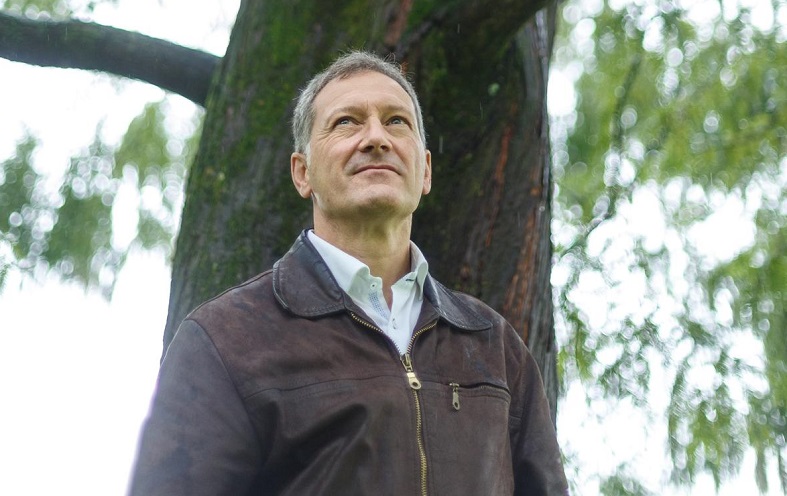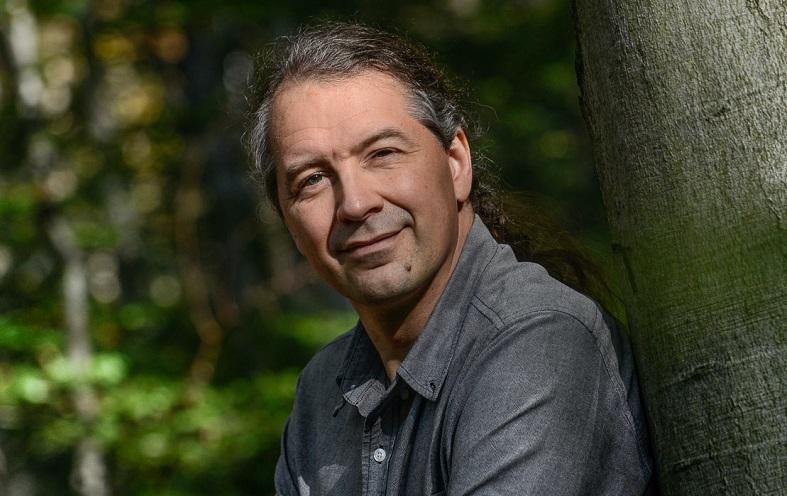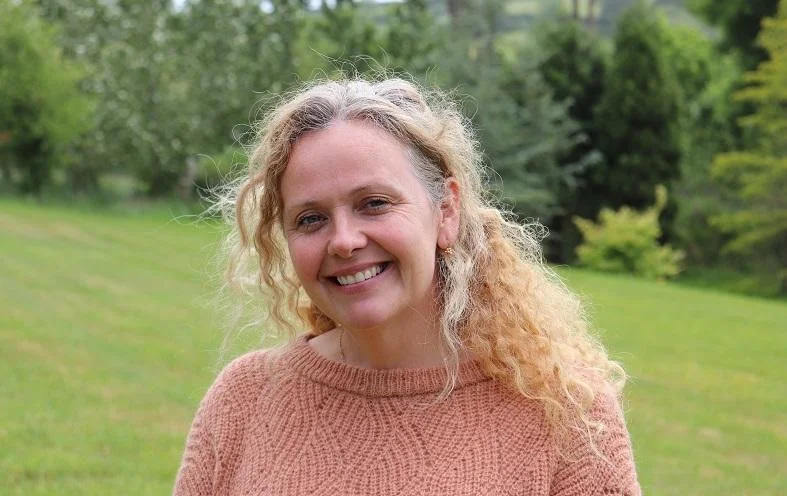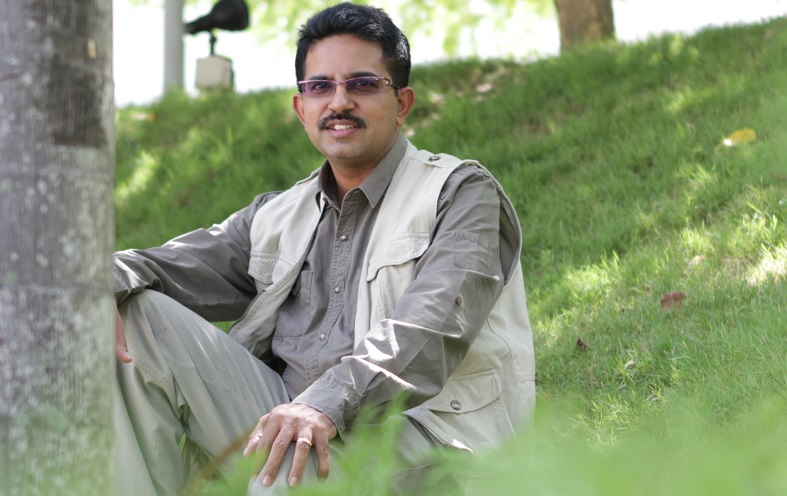
Amran Hamzah, Professor in Tourism Planning at Universiti Teknologi Malaysia, in this interview shares his thoughts on community-based tourism in Malaysia and how it can give a social and economic boost to rural communities.
He also discusses how the slow adaptation of sustainable tourism by businesses is challenging sustainable development, and how Malaysia is working towards a recovery plan for businesses that are affected by the coronavirus pandemic.
Amran, you are an expert in community-based tourism (CBT) with research experience in this field across the globe. Do you remember what first got you interested in the topic?
As a young tutor way back in the early 1980s, I used to take my students on field trips to the east coast of Malaysia where we used to stay in cheap lodgings and homestays built by the local villagers. During one of the field trips, I stumbled upon a picturesque fishing village, Kampung Cherating Lama, which had grown organically into a backpacker enclave since the early 1970s.
What never fails to amaze me during my subsequent visits to the village was the dynamism and competency of the local community in hosting Western FITs (mainly hippies and drifters) despite its lack of formal education, training and exposure to an alien culture. From then onwards, I decided to embrace CBT as my area of specialisation – which led to my Ph.D. on the sustainability of small-scale tourism development in Malaysia, and almost four decades of research in this field.
What is the difference between the CBT model in Asia compared to other parts of the world?
True, there is no one size that fits all, in CBT. However, the variations are not so much according to geographical regions, but are largely influenced by the initiator(s) of CBT.
CBT initiated by NGOs is the most common, and they are mostly developed to provide an alternative income for the local community once an area is gazetted as a protected area, in which logging, hunting and other forms of resource exploitation are no longer permitted.
NGO-initiated CBT is often criticised as being more concerned about the conservation of unique and threatened flora/fauna rather than the economic wellbeing of the local community.
CBT initiated by the government is usually prone to be dependent on handouts at the expense of a systematic and effective process of strengthening the capacity of the local community.
CBT initiated by the local community themselves is difficult to sustain in the mainstream tourism industry, and is susceptible to being monopolised or manipulated by the local elites, unless a broader-based organisation and governance structure are put in place, such as a homestay cooperative.
CBT is often associated with rural tourism, as its focus is on developing the local economies. Nonetheless, the connotation of rurality is different when comparing developed with developing nations, the latter often having to cope with a negative image. How can CBT assist rural communities in alleviating poverty and creating an alternative income?
Less than 10% of CBT worldwide could be considered as being successful as a tool for empowering rural communities and alleviating poverty. The lack of local capacity, lack of leadership and organisation, poor understanding of the market and the dependency syndrome are among the inherent weaknesses of CBT.
Based on a 1-year study of CBT projects in 10 APEC economies, which I led in 2008, the study team developed a manual consisting of a 9-step process of developing and sustaining CBT. Though dated, the 9 steps are still relevant to deliver a successful CBT model for rural empowerment, in which steps 1 to 5 represent the development phase:
- Step 1: Asses Community Needs and Readiness
- Step 2: Educate and Prepare the Community
- Step 3: Identify and Establish Leadership/Local Champions
- Step 4: Prepare and Develop Community Organisation
- Step 5: Develop Partnerships
Subsequently, steps 6 to 9 represent the sustaining phase:
- Step 6: Adopt an Integrated Approach
- Step 7: Plan and Design Quality Products
- Step 8: Identify Market Demand and Formulate Marketing Strategies
- Step 9: Implement and Monitor Performance
With the benefit of hindsight, I would add another step (Create a Financial Management System) if I were to revise the manual. This should be inserted early in the development phase.
Having a systematic and transparent financial management system is critical in CBT, to avoid financial abuse by local elites.
Your current research focuses on the travel characteristics and preferences of Chinese outbound tourists to Malaysia. Which findings can you share with us so far?
Interestingly, this research – which was commissioned by Tourism Malaysia in late 2019 – was in the data collection stage in China when our fieldwork was cut short because of the onset of the coronavirus. Despite this, I would like to share some highlights of the study, which is still ongoing.
Firstly, almost every country that has an active tourism sector was targeting the Chinese outbound market before COVID-19 became a global pandemic, given that it is undeniably huge and relatively untapped.
Most of the current outbound travellers are from the so-called 1st tier cities, such as Beijing, Shanghai, and Guangzhou. Second-tier and third-tier cities are also generating huge volumes of mostly first-time outbound travellers, and even 4th tier cities are now generating outbound tourists.
Furthermore, only 10% of the population of China has a passport, which is a reflection of its enormous potential. Therefore, it is not surprising to learn that many countries in South-East Asia were targeting mainly Chinese outbound tourists, to the extent that some were putting all their eggs in one basket.
Thailand, for instance, received almost 13M Chinese tourists in 2019 (more than 30% of total arrivals). Outside of arrivals from its neighbouring South-East Asian countries, especially Singapore, Chinese tourists made up the highest number of international visitors to Malaysia, accounting for around 60% of the total international tourist arrivals to the Malaysian state of Sabah.
Secondly, according to a megatrend analysis and our own findings:
There is a gradual shift from the ‘first wave’ of Chinese outbound tourists to a ‘second wave’. The former was represented by the mass and packaged tourists who were stereotyped as being unsophisticated, boisterous and even unwelcomed at several destinations. The latter, on the other hand, represent mostly the millennials who are increasingly travelling independently in the search for deeper tourist experiences.
Although packaged tourists are still dominant (about 40%), the ‘second wave’ is either travelling independently or using customised tours. Tourist spend is also higher among the ‘second wave’ tourists who are being increasingly attracted to, for instance, expensive wine tours in Italy or scuba diving at the top dive resorts in the world, such as Sipadan, Sabah.
Thirdly, our study shows that the tourism industry in Malaysia (and some countries in the region) has yet to embrace this shift in tourist demand by Chinese visitors, and many are still largely dependent on the mass and packaged tours, as well as ‘zero cost tours’ (profit only through commissions during organised shopping activities).
This low yield business model, which is commonly used by Malaysia’s industry players that specialise in the Chinese outbound market and which is dependent on volume and commissions, puts them in a risky position and exposes them to shocks in terms of their business resilience.
With the almost abrupt stop of Chinese tourists to Malaysia, triggered by the coronavirus epidemic, up to 30% of Malaysia’s tourism operators had to close shop.
You have played a major role in transforming the homestay industry in Malaysia. In 2012, Malaysia’s homestay programme won the prestigious UNWTO 2012 Ulysses award. What is so unique about the programme and how does it differ from those in the Western world?
The homestay programme in Malaysia started as part of a student exchange initiative involving mainly Japanese schools and youth associations. Recognising the growth in its popularity, the government officially embraced and launched the homestay programme as a tool for rural empowerment in 1995.
In essence, the Malaysia homestay programme is an experiential form of tourism in which tourists stay at thehost family’s house and actively participate in the local(and mainly rural) way of life. Guests stay in their own room in the family house but share the other facilities, such as bathroom as well as meals, with the host family.
The programme is mostly operated in rural areas and it is highly regulated in the form of certification, training, and monitoring. This ‘live in’ concept is very popular with international students who enjoy cultural immersion.
Although the homestay programme is conceptually an alternative form of tourism (small scale, low density, informal and spontaneous), Malaysia’s programme is relatively regimented by mainly catering to student groups of up to 100 persons who are often ‘herded’ from one rural activity to another: visiting farms, cultural performances and other rural attractions – leaving little time for bonding with the host family.
In addition, unlike the homestay programme in other parts of South-East Asia, Malaysia’s homestay is heavily supported by the government, with more than a dozen rural development agencies providing financial and technical assistance.
Over the past few years, variants of the homestay have emerged in the form of annex-type homestay and village stay/ kampungstay, in response to changing tourist demand. The annex-type homestay consists of guest rooms that are constructed as an annex to the main house but have their own entrance and bathroom/toilet, as well as a lounge and dining area. A village stay/ kampungstay takes the form of standalone accommodation, which is popular with guests who seek privacy in an idyllic rural environment.
After 25 years since their official launch in 1995, Malaysia homestays that are innovative in their business model – especially those that have incorporated variants such as annex-type homestay and village stay – are more successful than those that are still offering traditional homestays and are dependent on handouts from the government, which have stagnated or declined.
Altogether there were 219 registered homestays in Malaysia in 2019, offering 4,210 houses/operators and 5,956 rooms.
You are also an International Union for Conservation of Nature (IUCN) Regional Councillor. What is your role at IUCN?
Getting elected as an IUCN Regional Councillor in 2016 was an honour and privilege, which gave me an opportunity to be actively involved in the processes of formulating policies, actions and providing oversight in relation to biodiversity conservation at the global level.
Upon reflection, my first two years as a Councillor were a sort of baptism of fire, given the complexity of IUCN and the range of equally complex challenges and issues that the Union is at the forefront of global efforts, such as halting biodiversity loss, tackling climate change, ensuring just conservation and sustainable livelihoods, etc.
Once I became more comfortable with my role as IUCN Councillor, I believe that I became more effective as well. The highest point was perhaps during the process of formulating the IUCN One Nature strategic plan for 2030. This will provide the strategic direction for the Union to achieve global targets in biodiversity conservation, as we usher in a new decade of uncertainties and unprecedented challenges.
In my ambassadorial role as IUCN Councillor, I have been supporting the Secretariat and the IUCN Regional Office in Bangkok in ensuring that the global programme cascades to the regional and local levels, especially to IUCN members. I have been very active in capacity building programmes organised by the Bangkok office, notably related to the interface between tourism and conservation/protected area management, which is my forte.
I am seeking re-election as a Regional Councillor for the term 2020 to 2024 during the IUCN World Conservation Congress, which has been postponed to January 2021 due to COVID-19. I believe that I will be even more effective as a second term Councillor, if elected, especially to provide continuity as the Union navigates its way through a very challenging decade albeit with a visionary strategic plan to reverse biodiversity loss by 2030.
The coronavirus pandemic has been a jolt to the travel industry. How is the current crisis affecting Malaysian destination communities? How resilient are they?
Tourism is one of Malaysia’s major economic sectors, which contributed 15.2% to the GDP in 2018 (3rd largest sector) and 3.5M in terms of employment (23.5% of total).
The impact of the coronavirus epidemic in China that was spreading to the region saw the dwindling of arrivals from China towards the end of January 2020. Many of the inbound tour operators, hotels/resorts and the rest of the supply chain that were dependent on the Chinese market were already reporting huge losses in income before the coronavirus swiftly became a global pandemic.
Similar to the situation during the SARS epidemic in 2003, the initial response of the Malaysian government was to encourage the industry to explore new markets and focus on domestic tourism.
Unfortunately, this tested approach could not work this time around because, when the epidemic became a full-blown pandemic in March, the whole tourism industry came to a standstill due to the resulting booking cancellations, travel restrictions and the fear of travelling, that have since crippled the entire tourism and hospitality industry.
As a consequence, the government had to introduce a generous economic stimulus package in late March to cushion the impact of the economic fallout, in which the tourism industry received a significant proportion of the total, to keep tourism businesses afloat and to stop further bleeding. Despite this, it is estimated that at least 30% of tourism-related firms and SMEs will not be able to sustain their businesses, which in turn, is likely to result in significant job losses.
The speed of the crash provoked by the coronavirus pandemic is a reflection of the lack of business resilience among the tourism industry players in Malaysia which, as mentioned earlier, were operating on a high volume/low-profit margin business model, as well as the increasing dependence on the Chinese outbound market.
Interestingly, it has been the association of outbound tour operators that have been more vocal and assertive in requesting financial assistance from the government, rather than the inbound operators and local communities involved in tourism.
What advice would you like to give to CBT communities which have been affected by lack of visitors due to COVID-19 and struggling to make ends meet?
In most CBT communities, tourism is only a supplementary income and many rural communities could still depend on other sources of income related to agriculture and fisheries, etc.
However, there are CBT communities that are totally dependent on tourism and they used to earn more than USD 500,000 annually before the advent of COVID-19. Fortunately, the economic stimulus package introduced by the government extends to CBT communities at least for the next 6 months.
It is heartening to note that one successful CBT that I contacted (Miso Walai Homestay) revealed that they are preparing themselves for the much-anticipated recovery, even though it might be at least a year away. Morale is still high among the operators, and as devout Muslims, they regard this unprecedented challenge as fate.
Among others, they are currently carrying out building refurbishment and maintenance, improving their website, and re-training on safety and hygiene aspects.
The positive response by Miso Walai Homestay should be a source of inspiration and replicated by other CBT communities in the country. Towards this end, the related government agencies could use this opportunity by sharing the videos made by Miso Walai Homestay on their local efforts and initiatives with the other CBT communities, using social media as a source of inspiration.
Looking back at the current situation in a year or two – which positive changes would you love to have witnessed in the travel industry, triggered by the pandemic?
According to Resilience Theory, COVID-19 could definitely be considered as a shock to the equilibrium of the global tourism system, and upon hindsight, events such as SARS, H1N1 and the Asian Financial Crisis were just dips in an otherwise exponential growth of global tourism over the past two decades.
The systemic and speed of the impact of COVID-19 on the global tourism industry and the economy is unprecedented, and it is widely predicted that the tourism system will not be able to bounce back to its previous equilibrium state. Rather, a new ‘regime’ will emerge upon recovery. The question is what form of tourism will emerge once a cure or vaccine for COVID-19 could be found, in a year or two?
Idealists would like to see a more mindful, caring, responsible and ethical form tourism to emerge.
During the focus group discussions that were part of the planning process in the preparation of the National Tourism Policy for Malaysia (2020-2030) which I happened to lead, various tourism associations were asked whether their members would embrace a more ethical form of tourism by the next decade. None of the associations could envisage a strong commitment to this ideal by their members.
Given the lack of ‘buy-in’ from the tourism industry to support a theory of change for them to do business differently begs the question whether the shock created by COVID-19 could result in a transformation in tourist demand and practice towards a more ethical and responsible form of tourism?
At the peak of COVID-19 in China, the media conducted surveys that revealed a high level of intention among Chinese tourists to be more ethical and responsible in their future travels.
On the contrary, media coverage also showed Chinese tourists flocking to ecotourism attractions in huge numbers once the lockdown imposed by their government since November 2019 was lifted.
In addition, the most recent media coverage showed numerous scenes where Chinese tourists immediately indulged in what has been described as ‘vengeance spending’ once the lockdown was lifted.
I have been approached by the government to be part of the committee mandated to prepare the National Economic Recovery Plan for the tourism sector (post-COVID 19). While it is an honour and privilege to be invited, I believe that the committee has its work cut out to revive Malaysia’s tourism industry which has fallen to ‘ground zero’.
My advice to the Government of Malaysia is to start preparing the industry for a recovery, which is anticipated to be around 1 to 2 years away, by focusing on digitalisation and capacity building. The former is to transform the whole spectrum of the tourism industry through Information Technology and by embracing Smart Tourism, while the latter should focus on re-training for the tourism human capital especially in relation to safety, hygiene, interpretation/storytelling, and service quality.
Thank you, Amran.
More about Amran Hamzah and his research here.
Enjoyed our interview with Amran Hamzah on community-based tourism in Malaysia, and how the travel industry can bounce back after the coronavirus pandemic is over? Thanks for sharing!











